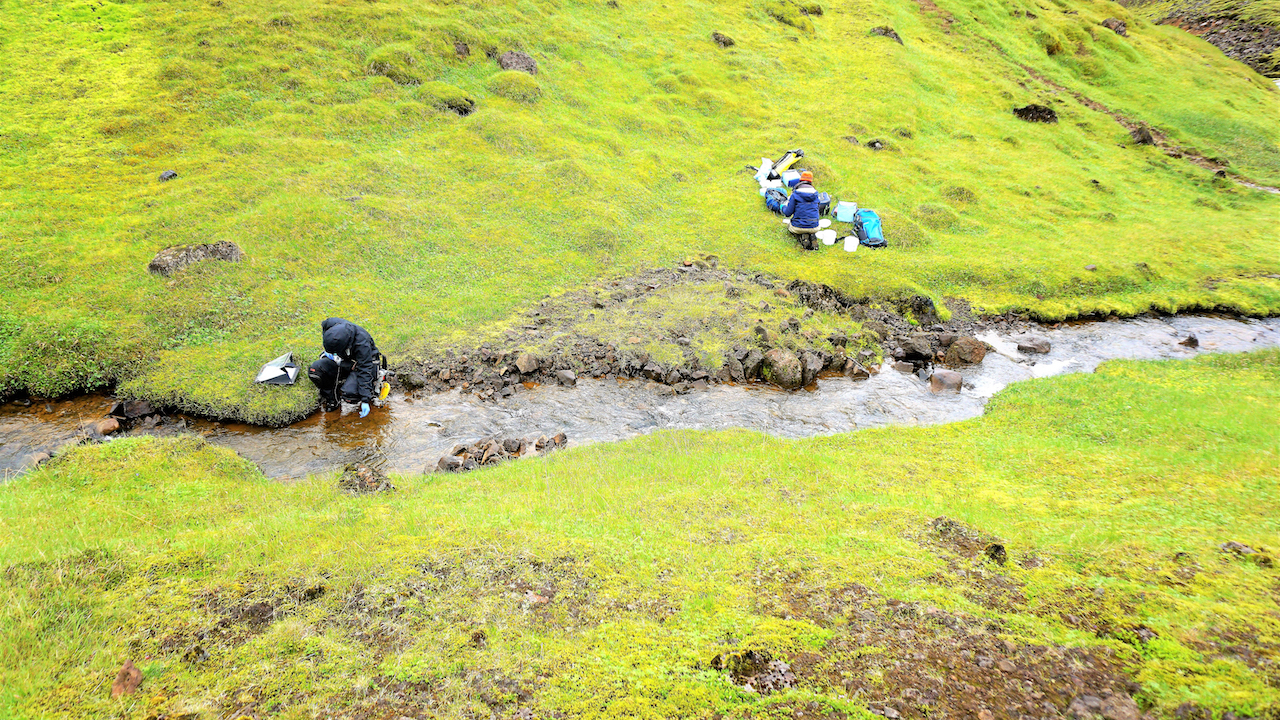- YouTube
- TikTok
OU research reveals how global ecosystems produce greenhouse emissions
Global pollution research, stemmed from OU methods and ideas, creates a baseline understanding of what influences pollution in river ecosystems.

Oakland University biology researchers banded with scientists across the world to understand the relationship between greenhouse gas emissions produced by ecosystems and environmental change. Their findings offer new methods and baseline information to follow changing ecosystems as the earth warms.
Microbes such as bacteria and fungi naturally decompose organic matter and release greenhouse gasses, but ecosystems across the globe are seeing changes to this process. While decomposition is important in all ecosystems, environmental factors, such as nutrient pollution and warming can alter decomposition rates, resulting in changes in the delivery of greenhouse gasses to the atmosphere.
 |
| OU Professor Scott Tiegs |
“Nutrients such as nitrogen and phosphorus are essential to all life, but are being added to water in excess, making them a globally important source of pollution,” OU Biology Professor Scott Tiegs, Ph.D. says. “Our paper is the first to quantify the capacity of rivers to remove nutrients from the water column on a global scale. [A water column is a conceptual column of water from the surface of a body of water like a river to the bottom sediment.]
Nutrient pollution can cause algae blooms in downstream lake and marine ecosystems, when the algae eventually decompose oxygen is used, leading to large areas with little oxygen. These are known as dead zones. Additionally, nutrient pollution can alter the quality of available drinking water.
With a base understanding of the drivers that alter decomposition rates, researchers set out to expand their research worldwide.
Initially, OU researchers worked in the OU Biological Preserve to developed methods to monitor the rate carbon breaks down in rivers by. Cotton was their choice organic material because it consists almost entirely of cellulose, the most abundant organic polymer on the planet. This makes OU’s research methods relevant for ecosystems across the world.
With a transferable method developed, Tiegs sought out the help of researchers around the world to gather baseline data. An experiment of this scale had yet to be completed on patterns and drivers of river decomposition. With the help of modern connectivity, roughly 150 researchers joined together in a matter of months.
“We reached out through existing professional connections and social media, just word of mouth,” Tiegs says. “There was a lot of interest in this, and the project expanded quickly.”
Next identical materials from OU’s methods were sent across the world for researchers to collect data in their various environments. Experiments were conducted in 11 biomes, consisting of over 500 rivers.
The publication of their research offers researchers around the world a baseline for further pollution research on a global scale.
“The assay [research methods] we developed can be applied in a lot of other different contexts,” Tiegs says. “We have a proposal in the works to target agricultural and urban systems and I hope we can do this on an even larger scale.”


 March 2, 2022
March 2, 2022